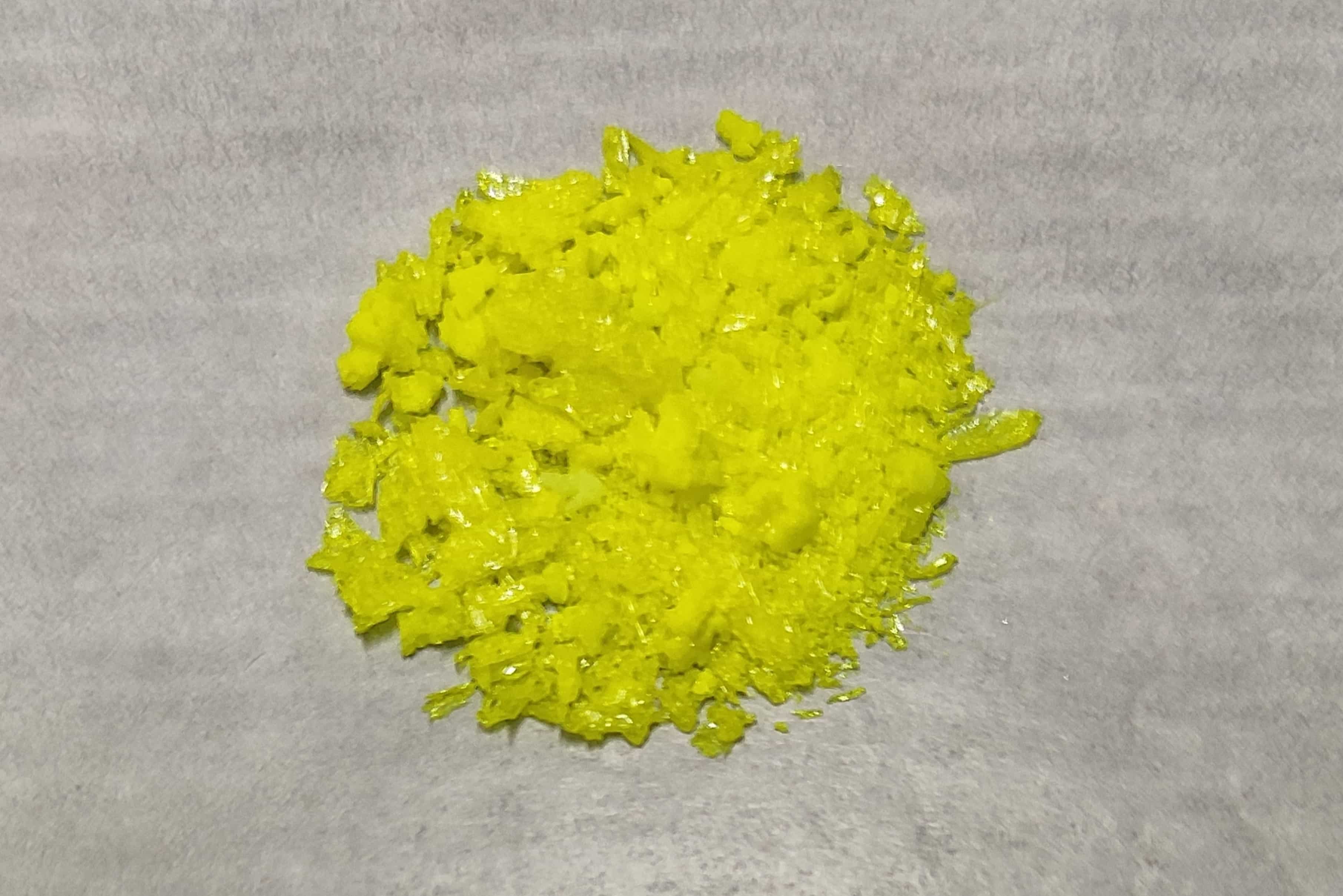
Caesium Chromate might sound like a mouthful, but this compound is more interesting than you might think. What is Caesium Chromate? It's a chemical compound with the formula Cs2CrO4, known for its bright yellow color. This compound is used in various industrial applications, including as a pigment and in the production of other chemicals. But there's more to it than just its uses. Did you know that Caesium Chromate is highly toxic and must be handled with care? Its unique properties make it a subject of study in chemistry and materials science. Whether you're a student, a science enthusiast, or just curious, these 30 facts about Caesium Chromate will give you a deeper understanding of this fascinating compound.
Key Takeaways:
- Caesium chromate, with its vibrant yellow color, is used in paints, corrosion inhibition, and analytical chemistry. However, it requires careful handling due to its toxicity and environmental impact.
- Caesium chromate, a compound with unique properties, has historical significance and diverse industrial applications. Its future lies in exploring safer uses and potential regulatory changes.
What is Caesium Chromate?
Caesium chromate is a chemical compound with the formula Cs2CrO4. It is known for its vibrant yellow color and unique properties. Let's dive into some fascinating facts about this compound.
-
Chemical Formula: The chemical formula of caesium chromate is Cs2CrO4, indicating it contains caesium, chromium, and oxygen.
-
Appearance: This compound is typically a bright yellow powder, making it easily recognizable.
-
Molar Mass: The molar mass of caesium chromate is approximately 481.80 g/mol.
Uses of Caesium Chromate
Caesium chromate has several applications across different industries. Here are some of its primary uses:
-
Pigment: Due to its vibrant yellow color, it is used as a pigment in paints and coatings.
-
Corrosion Inhibitor: It acts as a corrosion inhibitor, especially in the aerospace industry.
-
Analytical Chemistry: In analytical chemistry, caesium chromate is used as a reagent for detecting certain ions.
Safety and Handling
Handling caesium chromate requires caution due to its toxic nature. Here are some important safety facts:
-
Toxicity: Caesium chromate is toxic and can cause severe health issues if ingested or inhaled.
-
Protective Gear: When handling this compound, wearing protective gear such as gloves and masks is essential.
-
Storage: It should be stored in a cool, dry place away from incompatible substances.
Chemical Properties
Understanding the chemical properties of caesium chromate can help in its safe and effective use. Here are some key properties:
-
Solubility: Caesium chromate is soluble in water, which makes it useful in various aqueous solutions.
-
Oxidizing Agent: It acts as a strong oxidizing agent, which can be both beneficial and hazardous.
-
Stability: This compound is stable under normal conditions but can decompose when exposed to strong acids.
Environmental Impact
The environmental impact of caesium chromate is significant due to its toxicity. Here are some facts related to its environmental effects:
-
Pollution: Improper disposal can lead to soil and water pollution.
-
Bioaccumulation: It can accumulate in living organisms, leading to long-term ecological damage.
-
Regulations: Many countries have strict regulations regarding the use and disposal of caesium chromate to minimize environmental harm.
Historical Context
Caesium chromate has an interesting history that dates back several decades. Here are some historical facts:
-
Discovery: It was first synthesized in the early 20th century.
-
Industrial Use: Its use in industries, particularly in pigments and corrosion inhibitors, became prominent during the mid-20th century.
-
Research: Ongoing research continues to explore new applications and safer handling methods for this compound.
Interesting Facts
Here are some additional interesting facts about caesium chromate that you might find intriguing:
-
Color Change: When exposed to certain chemicals, caesium chromate can change color, which is useful in chemical analysis.
-
Crystal Structure: It has a unique crystal structure that contributes to its stability and reactivity.
-
Synthesis: The synthesis of caesium chromate involves the reaction of caesium hydroxide with chromic acid.
Health Effects
Exposure to caesium chromate can have serious health effects. Here are some important health-related facts:
-
Carcinogenic: It is considered a carcinogen, meaning it can cause cancer with prolonged exposure.
-
Respiratory Issues: Inhalation can lead to severe respiratory problems, including lung damage.
-
Skin Irritation: Direct contact with the skin can cause irritation and burns.
Industrial Applications
Beyond its use as a pigment and corrosion inhibitor, caesium chromate has other industrial applications:
-
Glass Manufacturing: It is used in the production of certain types of glass.
-
Electronics: In the electronics industry, it is used in the manufacturing of specific components.
-
Catalysts: Caesium chromate can act as a catalyst in various chemical reactions.
Future Prospects
The future of caesium chromate lies in finding safer and more efficient uses. Here are some potential future directions:
-
Green Chemistry: Researchers are exploring ways to use caesium chromate in environmentally friendly chemical processes.
-
Advanced Materials: Its unique properties make it a candidate for use in advanced materials and nanotechnology.
-
Regulatory Changes: Future regulations may further restrict its use, prompting the development of safer alternatives.
The Final Word on Caesium Chromate
Caesium chromate, a compound with the formula Cs2CrO4, is a fascinating substance with unique properties. Known for its bright yellow color, it's often used in pigments and dyes. This compound is highly soluble in water, making it useful in various chemical processes. However, it's also toxic and carcinogenic, so handling it requires caution.
In the world of chemistry, caesium chromate stands out due to its ability to act as an oxidizing agent. This makes it valuable in laboratory settings for various experiments and reactions. Despite its usefulness, the risks associated with its toxicity can't be ignored. Proper safety measures are essential when working with this compound.
Understanding caesium chromate's properties and uses helps appreciate its role in science and industry. Whether you're a student, a professional chemist, or just curious, knowing these facts can enrich your knowledge of this intriguing chemical.
Frequently Asked Questions
Was this page helpful?
Our commitment to delivering trustworthy and engaging content is at the heart of what we do. Each fact on our site is contributed by real users like you, bringing a wealth of diverse insights and information. To ensure the highest standards of accuracy and reliability, our dedicated editors meticulously review each submission. This process guarantees that the facts we share are not only fascinating but also credible. Trust in our commitment to quality and authenticity as you explore and learn with us.


